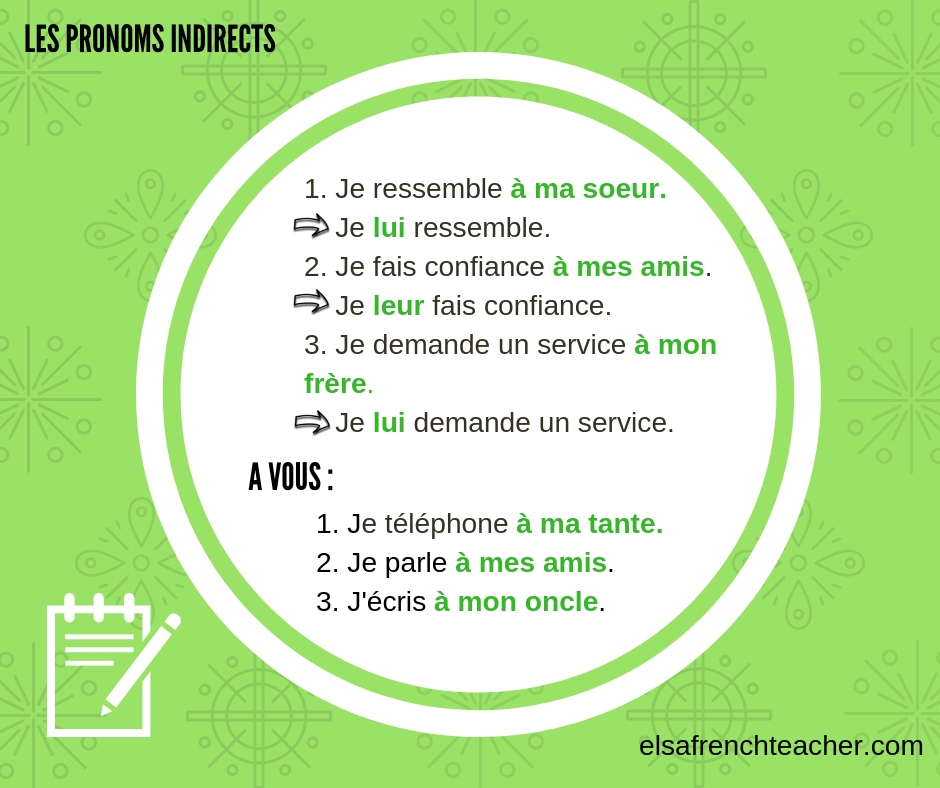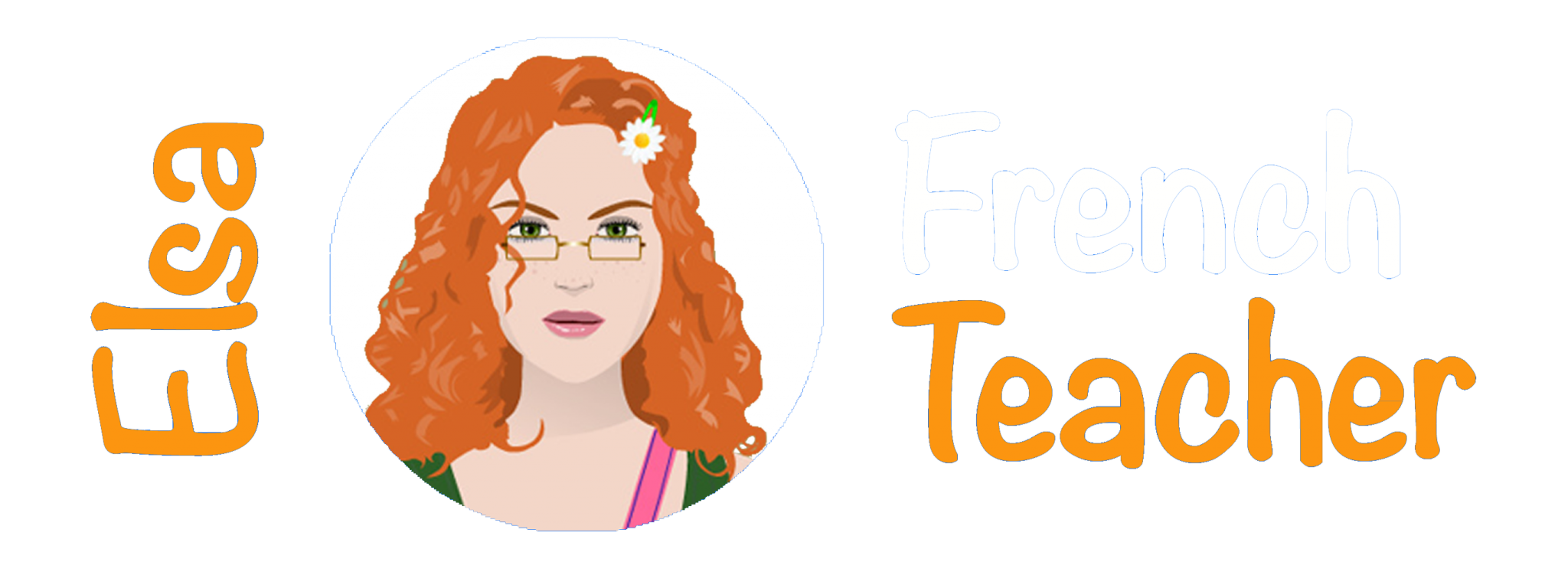Direct and indirect pronouns in French
Presentation
A pronoun replaces a noun or a nominal group.
collègue : a noun
un collègue sympa : a nominal group
un collègue de travail : a nominal group
When you don’t want to repeat a word many times (which is boring), you replace it with a pronoun.
J’ai un collègue. Ce collègue est sympa et efficace. Je parle souvent à ce collègue et j’écoute toujours ce collègue.
> In this sentence you have too many repetitions of « collègue ». let’s transform it :
J’ai un collègue, il est sympa et efficace. Je lui parle souvent et je l’écoute toujours.
 The repetitions have been replaced by different pronouns :
The repetitions have been replaced by different pronouns :
- il is a subject pronoun
- lui is an indirect pronoun
- l’ is a direct pronoun
Now you know why we use pronouns, let’s learn when we use direct and indirect pronouns.
Indirect pronouns
Indirect pronouns replace indirect objects.
An indirect object is a nominal group that is connected to the verb through the preposition à.
Je parle à ma nouvelle collègue.
> Je lui parle.J’obéis à mon chef.
> Je lui obéis.Je fais confiance à tous mes collègues.
> Je leur fais confiance.
You can ask the question: Je parle à qui? (I talk to whom ?)
> There is the preposition à between the verb and the object, therefore it’s an indirect object.
Unfortunately, sometimes a French verb uses the preposition à, but the equivalent verb in English doesn’t have a preposition. That can be confusing for you :
Je téléphone à mon ami – I phone my friend (and not I phone to my friend).
So, you need to know the French verbs that use the preposition à before an indirect object:
For example :
téléphoner à, parler à, obéir à, manquer à, plaire à, écrire à, sourire à, ressembler à, faire confiance à etc.
Direct pronouns
Direct pronouns replace direct objects.
A direct object is a nominal group that is directly connected to the verb without a preposition.
Je comprends mon collègue.
> Je le comprends.J’écoute ce collègue.
> Je l’écoute.Je comprends l’opinion de mon collègue.
> Je la comprends.J’écoute mes collègues de travail.
> Je les écoute.
You can ask the question: Je comprends qui? Je comprends quoi? (I understand who? I understand what?)
> There is NO preposition between the verb and the object , therefore it’s a direct object.
Summary
| masculine singular | feminine singular | Plural masculine and feminine | ||
|---|---|---|---|---|
| Direct pronouns | le l' (before a vowel) | la l' (before a vowel) | les | |
| Indirect pronouns | lui | lui | leur |
Good to know
Many verbs accept both indirect and direct objects :
Il écrit un mail à son chef.
« un mail » is direct: il écrit quoi? > un mail (He writes what? > an e-mail).
» à son chef » is indirect: il écrit à qui? > à son chef (He writes to whom? > to his boss).
You can replace these objects with their pronouns :
Il lui écrit un mail (He writes an e-mail to him)
Il l’écrit à son chef (He writes it to his boss)
And even :
Il le lui écrit 🙂 (He writes it to him.)
In French, the pronouns are BEFORE the verb.
Voilà! I hope this lesson is clear to you. Don’t hesitate to ask me questions!
A bientôt.
Elsa




But what about the order of direct and indirect pronouns in the SAME sentence, in negative sentences and in imperatives? I find this very confusing!
Il ne me la donne pas
Il ne la lui donne pas
These are correct, I believe, but the orders are different
Hi Chris, there is another lesson for that.